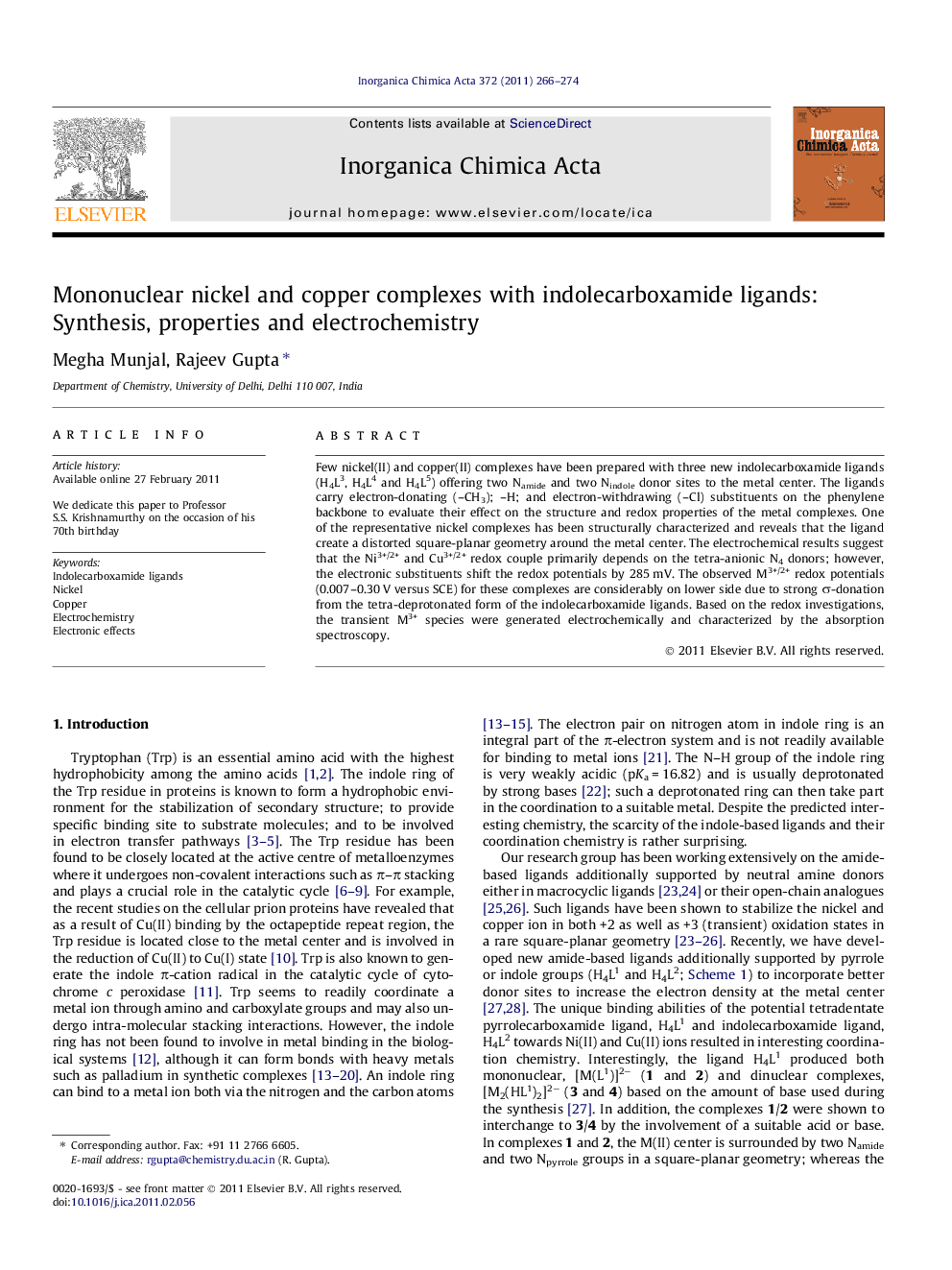| Article ID | Journal | Published Year | Pages | File Type |
|---|---|---|---|---|
| 1308900 | Inorganica Chimica Acta | 2011 | 9 Pages |
Few nickel(II) and copper(II) complexes have been prepared with three new indolecarboxamide ligands (H4L3, H4L4 and H4L5) offering two Namide and two Nindole donor sites to the metal center. The ligands carry electron-donating (–CH3); –H; and electron-withdrawing (–Cl) substituents on the phenylene backbone to evaluate their effect on the structure and redox properties of the metal complexes. One of the representative nickel complexes has been structurally characterized and reveals that the ligand create a distorted square-planar geometry around the metal center. The electrochemical results suggest that the Ni3+/2+ and Cu3+/2+ redox couple primarily depends on the tetra-anionic N4 donors; however, the electronic substituents shift the redox potentials by 285 mV. The observed M3+/2+ redox potentials (0.007–0.30 V versus SCE) for these complexes are considerably on lower side due to strong σ-donation from the tetra-deprotonated form of the indolecarboxamide ligands. Based on the redox investigations, the transient M3+ species were generated electrochemically and characterized by the absorption spectroscopy.
Graphical abstractFew nickel(II) and copper(II) complexes have been synthesized with three indolecarboxamide ligands offering two Namide and two Nindole donor sites. The ligands carry electron-donating (–CH3); –H; and electron-withdrawing (–Cl) substituents on the o-phenylene backbone to evaluate their effect on the structure and redox properties of the metal complexes (see scheme).Figure optionsDownload full-size imageDownload as PowerPoint slideHighlights► Coordination chemistry of deprotonated indole ring in a rigid ligand framework. ► Ni(II) and Cu(II) complexes of a set of tetradentate indolecarboxamide ligands. ► Crystallographic characterization of a mononuclear Ni(II) complex. ► Observation of highly negative Ni3+/2+ and Cu3+/2+ redox potentials. ► Effect of electronic substituents (–H, –CH3 and –Cl) on the redox potential.
